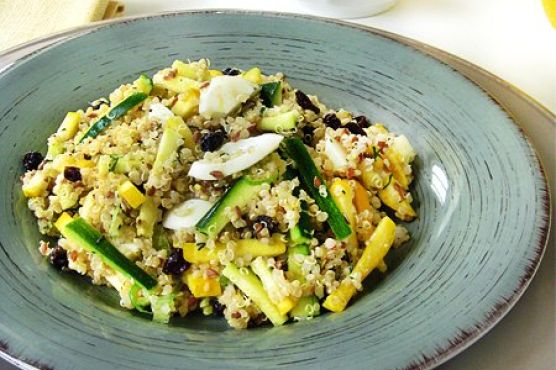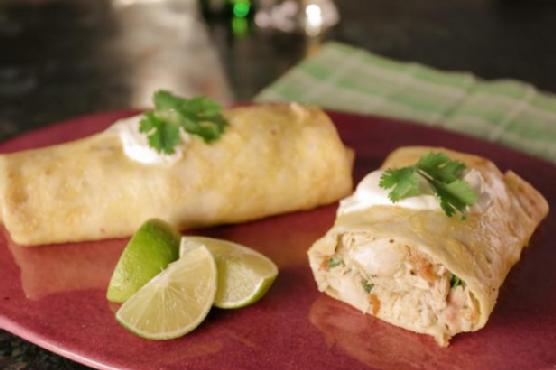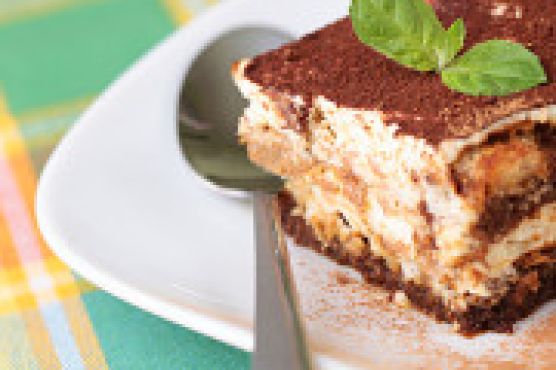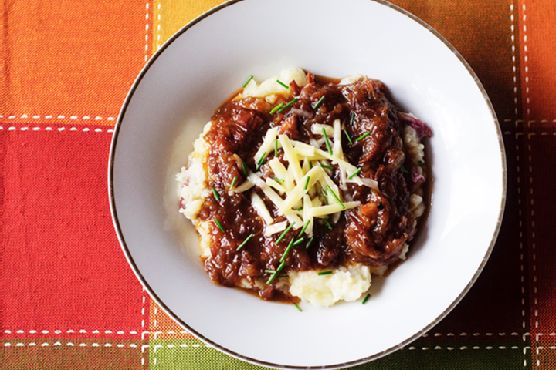Quinoa Salad with Summer Squash & Currants
Quinoa Salad with Summer Squash & Currants takes around 10 minutes from beginning to end. Watching your figure? This gluten free, dairy free, and lacto ovo vegetarian recipe has 360 calories, 15g of protein, and 11g of fat per serving. For $1.44 per serving, you get a salad that serves 4. It will be a hit at your The Fourth Of July event. This recipe from Queen of Quinoa has 110 fans. A mixture of zucchini, eggs, lemon zest, and a handful of other ingredients are all it takes to make this recipe so flavorful. Taking all factors into account, this recipe earns a spoonacular score of 96%, which is outstanding. Similar recipes include Summer Squash and Red Quinoa Salad with Walnuts, Summer Squash And Red Quinoa Salad With Walnuts, and Kale & Summer Squash Salad with Quinoa & Lemon.
Servings: 4
Preparation duration: 10 minutes
Ingredients:
1 bunch dill, finely chopped
3 hard boiled eggs, roughly chopped
¼ cup brown flax seeds
1 garlic clove, finely minced
1 bunch green onions
1 lemon, zest and juice
1 cup quinoa
¼ cup red currants
Salt and pepper, to taste
1 medium squash, julienned
1 medium zucchini, julienned
Equipment:
sauce pan
mixing bowl
whisk
Cooking instruction summary:
Bring 1 cup quinoa and 2 cups water to boil in a small sauce pan. Cover and reduce to a simmer for 8 – 10 minutes.Remove the quinoa from the heat and keep covered for 5 minutes. Lightly fluff with a fork and transfer to a mixing bowl, allowing it to cool for another 10 minutes.Add the zucchini, summer squash and green onions to the quinoa and mix well until combined.Whisk together the lemon zest, juice, dill, garlic, salt and pepper and toss with the quinoa.Add the eggs, currants and flaxseeds and fold into the quinoa salad.Top with red pepper (if you like added heat).Enjoy!
Step by step:
1. Bring 1 cup quinoa and 2 cups water to boil in a small sauce pan. Cover and reduce to a simmer for 8 – 10 minutes.
2. Remove the quinoa from the heat and keep covered for 5 minutes. Lightly fluff with a fork and transfer to a mixing bowl, allowing it to cool for another 10 minutes.
3. Add the zucchini, summer squash and green onions to the quinoa and mix well until combined.
4. Whisk together the lemon zest, juice, dill, garlic, salt and pepper and toss with the quinoa.
5. Add the eggs, currants and flaxseeds and fold into the quinoa salad.Top with red pepper (if you like added heat).Enjoy!
Nutrition Information:
covered percent of daily need















